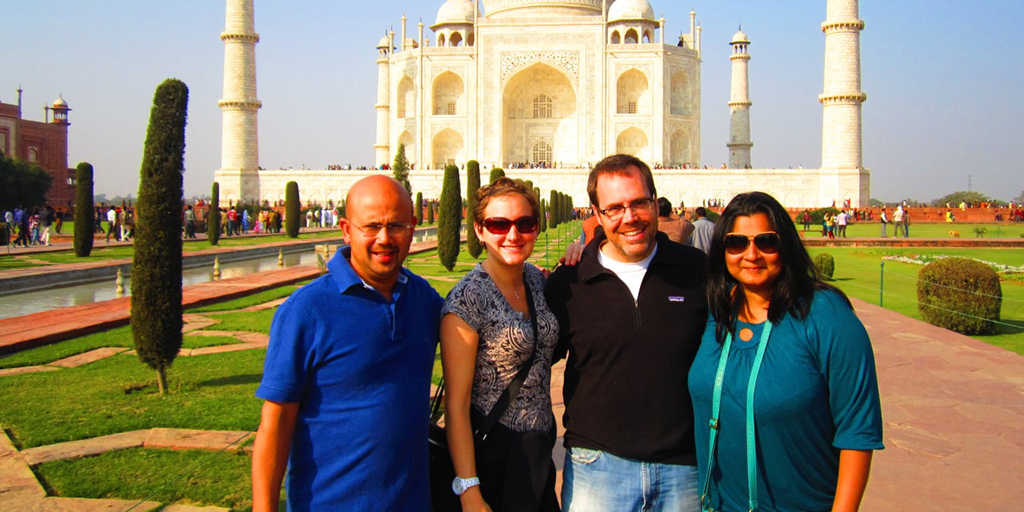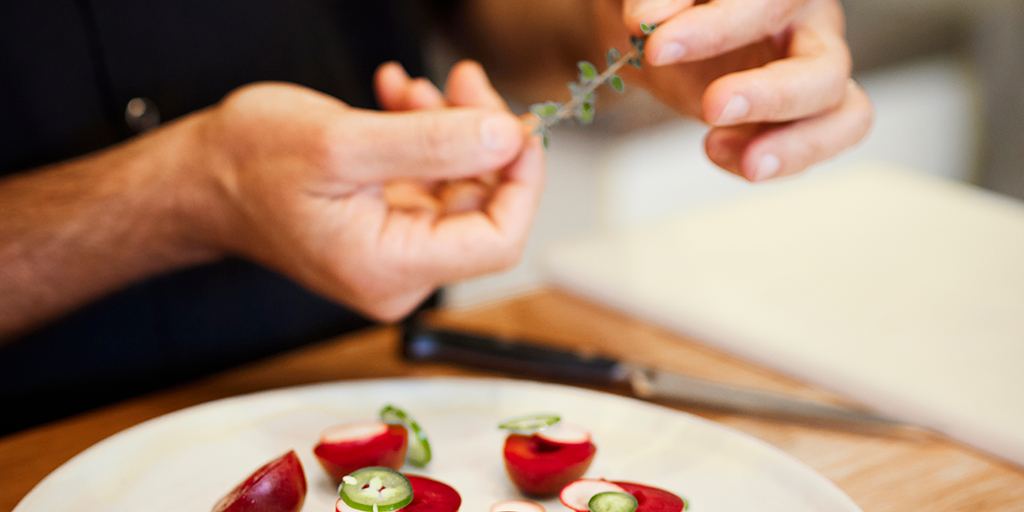Douglas Katz is stumped. The chef is working on his newest menu, and the problem isn’t that he can’t come up with anything; it’s that he has so many options to choose from. In the past, his menus have featured dishes such as eggplant bharta, a smoky, roasted vegetable mash bejeweled with cherry tomatoes; crispy chickpea fritters served with a tangy plum amba dipping sauce; seared lingcod with bright red tamarind sambar, a lentil-based stew; warm, spiced cashews in garlic and ginger; and chicken masala made with sweet Kashmiri chilis.
Katz plans on finishing the menu just in time for the 51-year-old to open the doors to Amba, his Indian-fusion concept located in Hingetown, later this year or early next year.
“The idea is that there are familiar tastes, textures and flavors that people will enjoy and that maybe they’ve never experienced before,” he says. “We’re not looking to share an esoteric take on food. There will be some familiarity in what we create.”
Whatever the final menu, one thing is for certain: Each dish will be plated to perfection, served as composed small plates so precise and balanced that they double as modern art. They’ll be as colorful as they are flavorful, in exactly the style that Clevelanders have come to expect from Katz, a mainstay Cleveland restaurateur of more than two decades.
The renowned chef is perhaps best known for Fire Food and Drink, the iconic fine dining restaurant he ran for 20 years in the heart of Shaker Square until its unceremonious closure near the start of the pandemic. Popular for its seasonal offerings, sustainable practices and inventive, impeccable dishes, Fire’s food earned Katz a James Beard Award nomination for Best Chef of the Great Lakes Region in 2014. But at its core, it was community that made Fire so popular. Katz intended it to be a gathering place for neighbors to become friends while bonding over the kind of food that, for a long time, you couldn’t get just anywhere in Cleveland.
Ever the extrovert, he thrived on the hustle and bustle of it all by getting to know his customers, staying hyper-involved with his staff and always working at breakneck speed behind the scenes.
“I have a personality that can handle a lot at once,” Katz says. “The restaurant business experience is such that every Saturday night, you’re making decisions on the fly, you’re always addressing things — your mind is set up to deal with everything thrown at you.”
That kind of nimble adaptiveness has kept him in perpetual motion throughout his career. It’s also the reason he’s remained so successful despite the pandemic.







